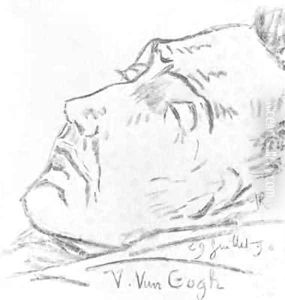Paul (Paul Van Ryssel) Gachet Paintings
Paul Gachet, born Paul Ferdinand Gachet on July 30, 1828, in Lille, France, was a significant figure in the world of art, not for his own artistic creations, but for his role as a friend, doctor, and patron to some of the most prominent Post-Impressionist painters, including Vincent van Gogh. Gachet studied medicine in Paris and developed a keen interest in mental illnesses, a field that was still in its infancy. His passion for art, combined with his medical career, placed him in a unique position to interact with and support artists, many of whom struggled with mental health issues and poverty.
After establishing his medical practice, Gachet became deeply involved in the Parisian art scene of the late 19th century. He was an enthusiastic collector and amateur artist, often painting and etching in his leisure time. His home in Auvers-sur-Oise, a village northwest of Paris, became a haven for artists seeking respite and recovery, offering them both medical care and companionship. It was here, in the final months of his life, that Vincent van Gogh formed a close bond with Gachet, shortly after admitting himself to an asylum in Saint-Rémy-de-Provence.
Van Gogh's portrayal of Gachet in the famous painting 'Portrait of Dr. Gachet' reveals the depth of their connection, capturing the doctor's melancholic disposition and empathy for those suffering from mental anguish. Gachet's approach to treating his artist friends was holistic, often prescribing art as a form of therapy. Beyond Van Gogh, Gachet's circle included Paul Cézanne, Camille Pissarro, and other luminaries of the Impressionist and Post-Impressionist movements.
After Van Gogh's death in 1890, Gachet continued to support and advocate for the artists he befriended, amassing an impressive collection of their works. His legacy, however, is a complex one, with some contemporaries and later critics questioning the effectiveness of his treatments and his influence on Van Gogh's final days. Despite such controversies, Gachet's contribution to the art world extends beyond his medical practice, remembered as a compassionate figure who deeply influenced the course of Post-Impressionism.
Paul Gachet died on January 9, 1909, in Auvers-sur-Oise. After his death, his son, Paul Gachet Jr., inherited his collection, eventually donating a significant portion to the French state. Today, Gachet is commemorated for his unique role as a connector of art and medicine, embodying the intersection of creativity, compassion, and care.
